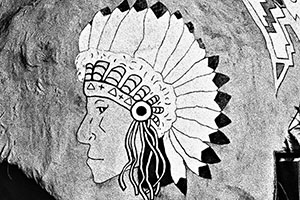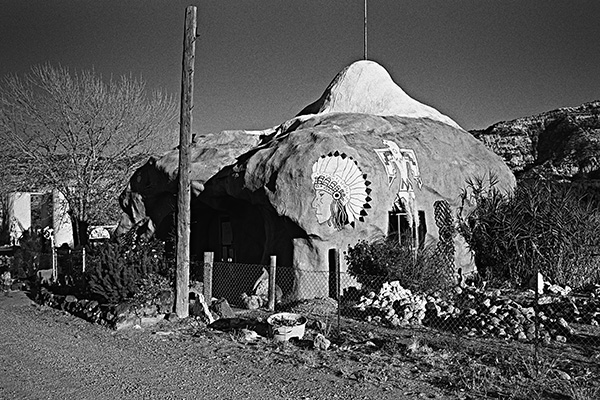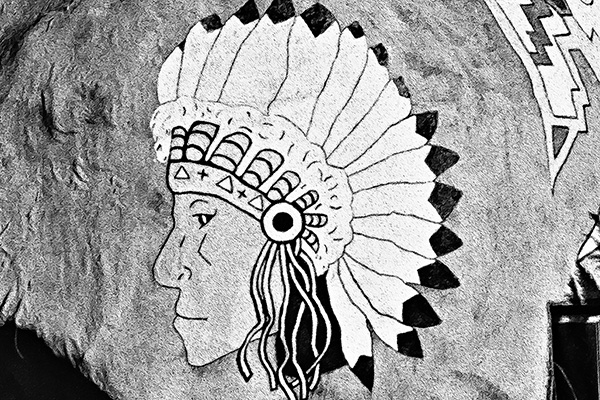Dude! Where’s the Ansel Adams
Button?

By Pete Myers

Joe’s Rock Shop
Alas, the First Wave of the digital photographic era is over. And
we begin again with the Second Wave—this Photokina 2006.
The First
Wave was about the promise of the digital photographic era. The
promise was that we would be able to take better pictures because the
images
would not be recorded to film. This single promise has been the
industry’s
wild goose chase for the past decade.
Many of us have suffered through
the growing pains of the First Wave and can report back that
such promise was only partially fulfilled in the opening decade of
the
digital photographic
era. Certainly, there have been dramatic results with digital
photography, but now our lives contain greater complexity and new phrases
such
as:
- monitor calibration
- printer calibration
- image archiving
- memory cards
- color gamut
- inkjet printers paper and ink
- banding
- battery life
- digital postproduction (Photoshop and variants)
- chromatic aberrations
- RAW file formats and conversion
- firmware version xx.x
- upgrade costs of computer, printer, and camera
- obsolesces and out-of-business
vendors
The First Wave was about
getting any of this technology to work at all. The Second Wave
will be about
building tools for digital photography that work correctly
and with lasting value to the photographer.
Market tracking on the
consumer side is showing a slowdown in the growth of digital
camera sales.
Simply
put, the market is already beginning to fully saturate with “point
and squirt” cameras. The market is chuck-full of digital cameras,
each capable of reasonable image quality so that grandma and grandpa
can see the grandchildren via email, eBayers can sell their goods online,
and we can all bore each other silly with our vacation photos. As it
stands, current digital camera technologies are likely good enough
to get the job done for most people. Take the memory card to your local
WallyWorld, and drive home with beautiful hard-copy photo prints of
your images for pennies on the dollar.
On the professional side, the
news is more about who is still in business, rather than what
we get to shoot. Professional cameras and lenses have always been a
narrow
market segment. And when it became difficult and expensive
for them to chase technology development during the First Wave of the
digital
photographic era, many of the original players left the professional
camera market rather than suffer through each and every painful
bump in the development path.
During the Second Wave, I see development
patterns
of professional cameras slowing down. Given the requirements
of a decent signal to noise ratio for the camera, there is a limit
to how many
pixels can be pushed onto an image sensor of fixed size.
We have about reached those limits based on Bayer Matrix technology.
I
see little
progress in any attempt at breaking away from Bayer and towards
three-chip solutions, as the prospects of lens re-design are daunting
and expensive.
Delivering
technically sound and reliable products will be the challenge
to manufacturers of professional equipment in the Second Wave. Professionals
are tired
of paying for cameras that have firmware issues out of the
box; cameras that cannot be fixed or maintained properly, and do
not stand the test
of time. The technology for today’s professional digital cameras
is getting good enough wherein conditions of reliability need to be
met before a product ever ships—and to do so takes long development
times and thorough quality-assurance testing.
The biggest shift I see
in semi-pro and pro gear is that there will be fewer buyers.
That is not to say that the market will collapse. It will simply prune
down
to the level of semi-pro and professional activity before
the First Wave ever hit. Why? Because there is no “Ansel Adams Button” on
the backs of digital cameras.
The “Ansel Adams Button” was
the theoretical promise that was sold to the semi-pros during the First
Wave. The false hope was the suggestion that one could record with
a digital camera an image that rivaled what Adams produced from his
big 8”x10” negatives during the golden era of film—and
if so, then certainly the average Joe could take images that were just
as exciting as what Adams used to make.
What legions of photographers
have once again discovered the hard way is that their cameras
do not contain the fabled “Ansel Adams Button”, nor his
mojo. Today’s digital photographic medium has proven just as
hard to use in making great images as was true in Adams’ time,
and with film. As I have written about extensively in "Making
Images—Not
Taking Images", and "Long
Road Down: The Making of a Fine Art Photograph",
once again it is the hard work of the photographer
in post production
that yields rich results—and making an image is a function
of the artist, not the camera technology.
As the chimera of the “Ansel
Adams Button” proves false from the trials of the First Wave,
many photographers will fade away to try other hobby activities. This
can already be seen in the site statistics of popular online photography
magazines, which slowly are showing smaller, but more sophisticated,
audiences. The refined audience is more inquisitive in regard to questions
of what techniques and technology really work and how to obtain lasting
value for one’s money. But further, many are beginning to push
on towards an understanding that technology is not enough to make an
art form. Many photographers are asking the harder questions in terms
of how to go beyond technology when making their own images.
As Photokina
2006 hits the calendar, it’s time to look towards the Second
Wave and find the bedrock for our industry in lasting value from our
digital photographic technologies. Certainly, technology will keep
advancing, as it always has done so—and that is good for the
industry. But technology is not where the Second Wave hangs its hat—It
will be in the establishment of lasting value from technology that
actually creates meaningful photographs year-in and year-out without
being burdensome to the photographer. 
Joe’s Rock Shop-Detail
Images © 2006,
Peter H. Myers. |